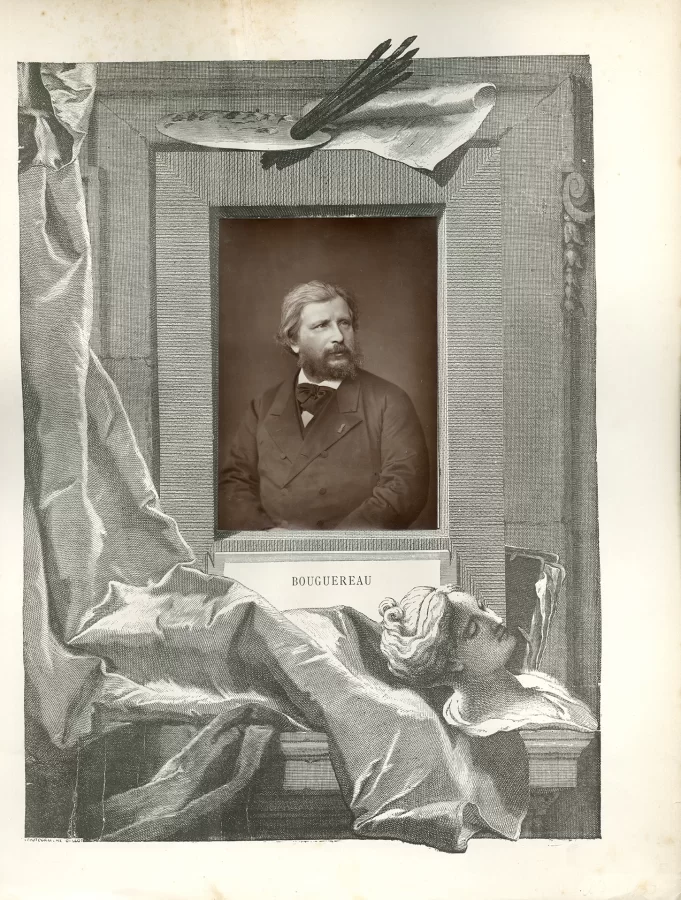William-Adolphe Bouguereau (French, 1825-1905)
Bouguereau was an academic painter who focused on mythology, classical imagery, and the female body. As the symbol of the official Paris salon, he was seen as the enemy by the Impressionists and burgeoning avant-garde Modernists. Because of this, his work fell out of favor for decades in favor of experimentation, but was picked up again in the 1980s when artists became interested in a return to the figure. The artist’s photographer for this work may be the Firmin and Charles Gillot family, a father and son who were inventors and engravers in Paris and helped design the photoengraving process.
Bouguereau attended the École des Beaux-Arts and also studied anatomy, archeology, and historical costuming. He was greatly inspired by Renaissance artists and strived to similarly portray the human figure with such skill. He gained a reputation throughout Europe and undertook artwork for royalty and aristocracy. He often painted women with classical, mythological, historical, or religious significance as was popular at the time. He received many honors and was known to have painted over 800 works, although many are today lost. Hugely successful, avant-garde artists rebelled against his style, calling works Bouguereauté if they relied on slick, artificial surfaces.


